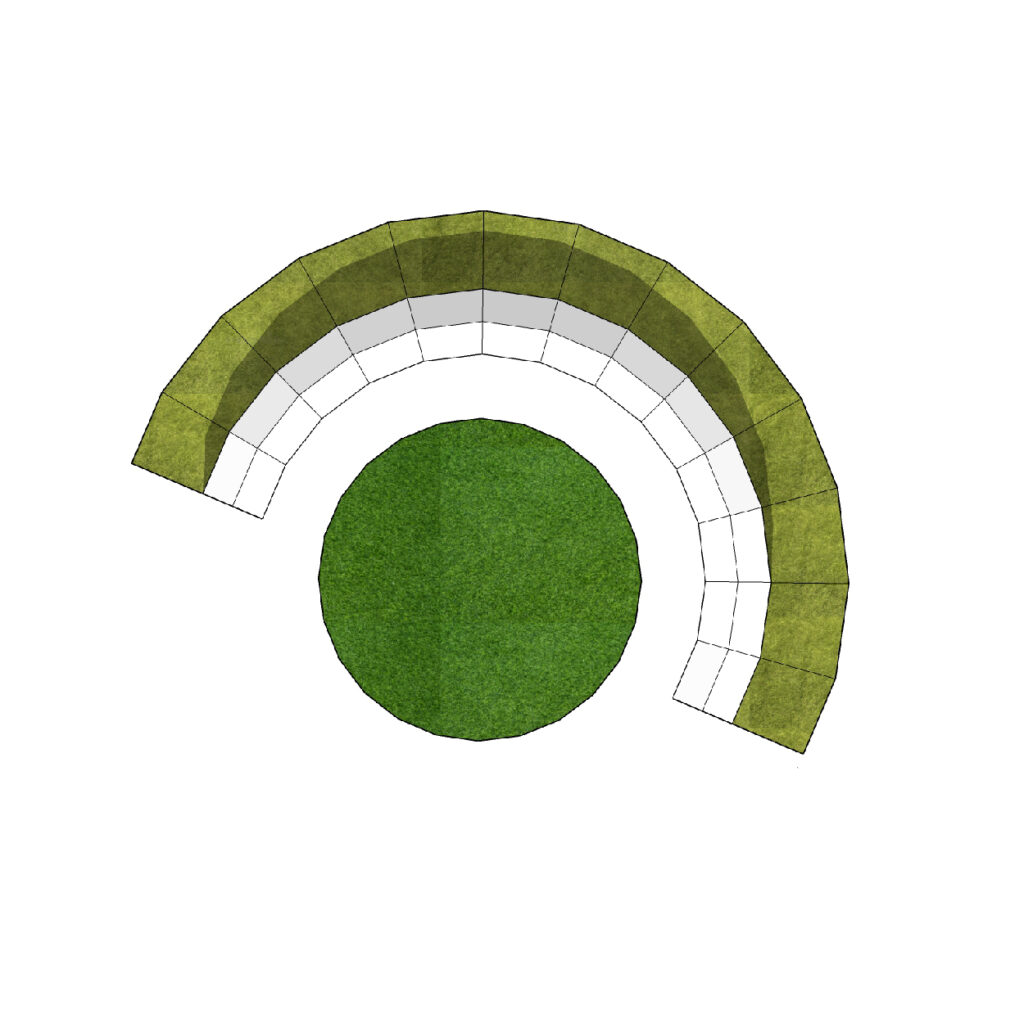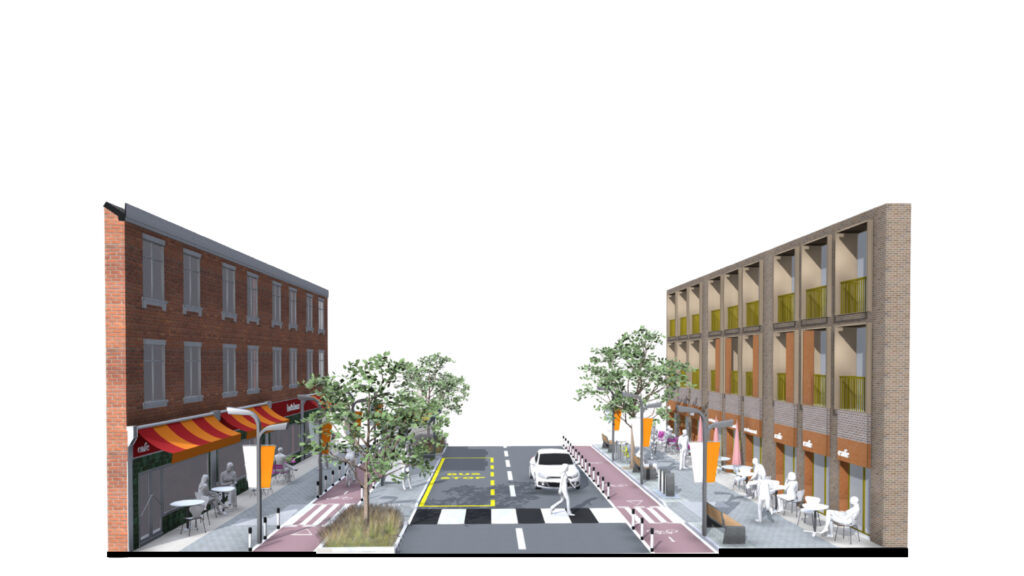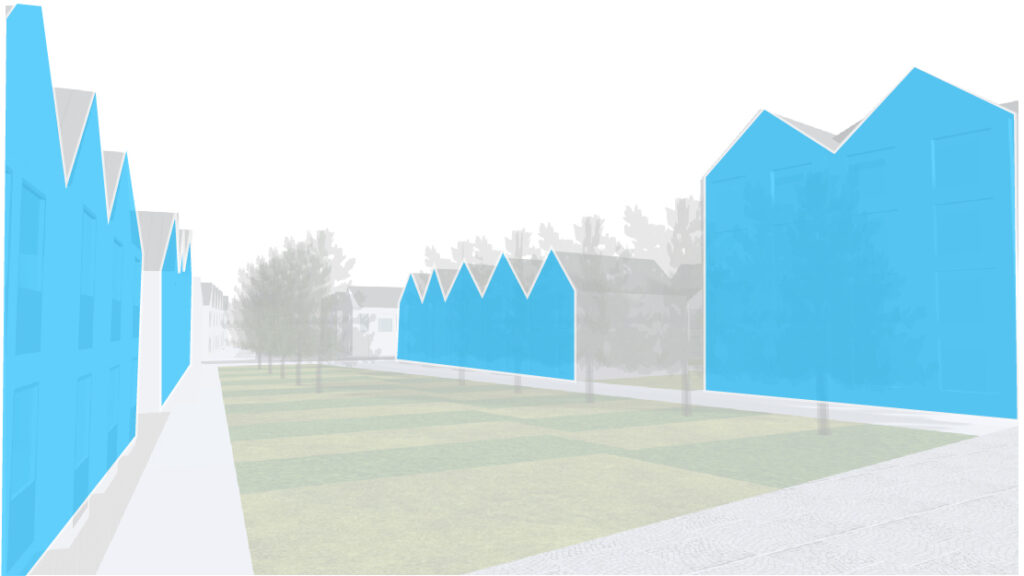
Hulme Living Leaf Street Housing
Hulme Living Leaf Street Housing by Mecanoo for One Manchester The area around Leaf Street in Hulme, just outside Manchester city centre, has a history
New places are defined as large scale new or regenerated communities, usually requiring a new urban structure to be formed. This includes the pattern or arrangement of development blocks, the streets, buildings, open spaces and landscapes which make up urban areas. It is the interrelationship between these elements, rather than their particular characteristics, that bond together and make a place.
The urban structure should be designed around a landsacpe led strategy in order to deliver a positive and coherent identityThe identity or character of a place comes from the way that buildings, streets and spaces, landscape and infrastructure combine together and how people experience them. More and lay the foundation for the detailed design that follows. When successful it provides a coherent framework which forms the basis of the design of individual elements bringing them together to create coherent, characterful and unique places.
The urban structure of each place will be subtly different and larger sites should be planned in a way that complements and responds to its strategic and immediate context. When planning New Places, a simple layered approach will deliver a successful masterplan which is holistic in its outcome.
Local characterCharacter includes all of the elements that go to make a place, how it looks and feels, its geography and landscape, its noises and smells, activity, people and businesses. This character should be understood as a starting point for all development. Character can be understood at three levels; the area type in which the site sits, its surroundings and the features of the site. More makes places distinctive and memorable and helps people to find their way around. Well-designed, sustainable places with a strong identityThe identity or character of a place comes from the way that buildings, streets and spaces, landscape and infrastructure combine together and how people experience them. More give their users, occupiers and owners a sense of pride, helping to crear and sustain communities and neighbourhoods.
Applicants should demonstrate in their submission how this element of the code has been complied with.
Documents required:
Active frontages can provide informal surveillance opportunities improving the safety of an area and creating vitality through the presence and interaction of people. The inclusion of commercial and retail active frontages can also contribute to the delivery of a mix of day and night time uses. The requirement to provide active frontages will vary by area typeParts of the local area that share common features and characteristics. Common rules and parameters can then be applied to each area type. More and will likely be higher in the denser area of New Places and existing areas. In high density areas there should be a clear distinction between public and private spaces, both physically and visually.
Applicants should demonstrate in their submission how this element of the code has been complied with.
Documents required:






Look at the images below to understand the impact of building height to street width ratio
High rise, high density neighbourhoods or town centres; A ratio of 1:1 building height to street width

High density suburbs and town centres context; A ratio of 1:2 building height to street width

Low density new places and medium density suburb context; A ratio of 1:3 building height to street width

Low density residential context; A ratio of 1:4 building height to street width




Long distance views should be considered. See guidance on tall buildings regarding the width and vertical proportion of tall buildings. It is recommended that tall buildings are tall with small footprints and an elevation design that emphasizes vertical proportions.
Applicants must demonstrate that they have optimised opportunities to protect existing views, vistas and landmarks and create new views into, within and out of the New Place.
Area types:
Documents required:
Developers should look for opportunities to link the development site with its surroundings and create a visual connection between areas. Creating new views, and protecting and strengthening existing views can help to create a sense of placeA sense of place is the unique collection of qualities and characteristics that makes one town or development different to another. It lends meaning or attachment to a development or place, transforming it into a home, a neighbourhood, or a community. A sense of place is also what makes our physical surroundings worth caring about. More, aid legibilityThe degree to which a person understands and recognises characteristics about an area or building which help them to navigate around an area, or understand a building. More and make wayfindingBetter wayfinding means improving the ease with which people can navigate themselves to, from and within a place or development. More easier.
Applicants should identify the key existing views, vistas and landmarks relevant to the application (with assistance through the pre-application process if necessary) and analyse the impact of the development upon them. Where a site is in a conservation area, the relevant views identified in the Conservation Area Appraisal / Management Plan should be used as a minimum. Consideration should be given to changes in level which may produce unexpected views. Applicants must show, where relevant, what new views will be created in or through the development.
Documents required:







Hulme Living Leaf Street Housing by Mecanoo for One Manchester The area around Leaf Street in Hulme, just outside Manchester city centre, has a history

by Buttress Architects for Muse Developments The development is located in the Adelphi/Bexley Square Conservation Area and the primary aim of the site was to

Accordia by Fielden Clegg Bradley Architects, Alison Brooks Architects and Maccreanor Lavington Architects Accordia was the first housing project to win the RIBA Stirling Prize and widely regarded







